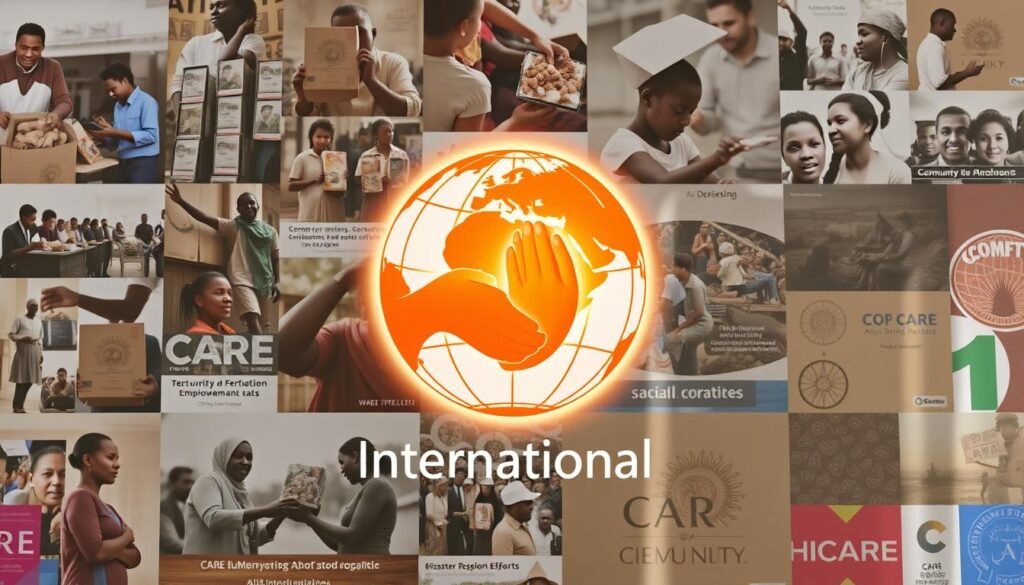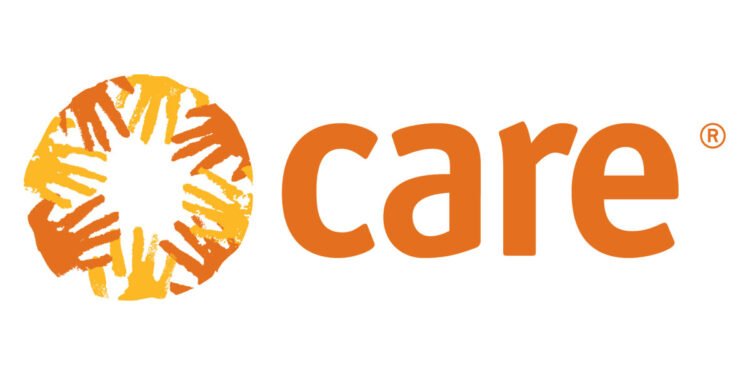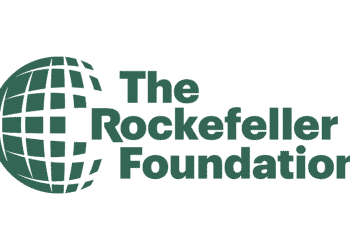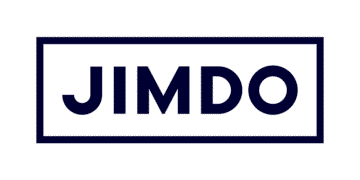92.3 million people were reached directly by relief and development work, with hundreds of millions more touched through partner programs. That scale shows how one global group moved from postwar parcels to modern, data-driven humanitarian action.
The organization began in 1945 and became famous for the care packages sent to Europe after World War II. Over decades it evolved into a leader in emergency response, food security, health, and livelihoods.
Today, programs span more than 100 countries. Field teams run humanitarian aid projects that combine short-term relief and long-term development. Public evaluations and meta-analyses document measurable impact across sectors.
With liaison offices in New York and ties to U.S. partners, the group remains relevant to American donors, policy makers, and archives like the york public library that preserve the story of the first care efforts. This guide previews how it works, where it serves, and what results it reports.
Key Takeaways
- The organization began with care packages and now runs broad humanitarian aid and development programs.
- It reports large-scale reach and shares public evaluations to show impact.
- Programs cover food, health, water, education, and climate resilience.
- Governance through a confederation and New York liaison offices supports field work.
- Focus on women and girls drives deeper community outcomes across projects.
CARE International at a Glance
From emergency response to long-term development, the confederation links national members to programs that span crisis aid and resilience building. The organization coordinates 18 national members, two candidates, and one affiliate via a Geneva secretariat.
Field activities cover food security, WASH, health, education, livelihoods, agriculture, climate work, and economic development. Integrated approaches help teams move from short-term relief to scalable models that improve income and nutrition.
Gender equality is central: programs target women and girls to accelerate gains in health, income, and community resilience. Public articles and evaluation summaries support evidence-based decisions and learning.
The secretariat and liaison offices (including new york and Brussels) align strategy across country programs. Relationships with government donors and multilateral partners fund multi-country portfolios and ensure coordination with humanitarian networks such as red cross red / red crescent mechanisms.
High-level metrics provide a baseline: in 2019 the confederation worked in 104 countries with 1,349 projects, reaching 92.3 million people directly. These figures frame deeper dives into origins, sectors, and funding later in this guide.
The Origins of the CARE Package and Early Humanitarian Aid
On November 27, 1945, 22 civic, religious, cooperative, farm, and labor groups formed the Cooperative for American Remittances to Europe to channel U.S. generosity into practical relief.
The first care effort bought 2.8 million surplus U.S. Army “Ten-in-One” rations. President Harry S. Truman purchased the very first package, signaling official support and spurring public donations. The first deliveries landed in Le Havre on May 11, 1946.
How the first care packages worked
Boxes often contained canned meats, powdered milk, dried fruits, fats, chocolate, and coffee. Packs were later customized—tea for the UK, pasta for Italy, kosher options where needed.
Senders paid roughly ten dollars to send a parcel. The group guaranteed delivery within four months and returned signed receipts. Those receipts became vital proof of life for anxious families.
Distribution, scale, and early missions
Millions of care packages crossed the Atlantic between 1946 and 1956. More than half went to Germany, and shipments supported the Berlin Airlift. The care mission poland operated from May 1946 to December 1949, delivering 201,872 packages worth about $2,067,528.
By early 1948 the model began to shift from named parcels to boxes marked “to a teacher” or “to a hungry person,” a move toward broader cooperative american relief. New York and other U.S. hubs handled fundraising, warehousing, and shipping, turning civic order into reliable emergency aid.
Legacy note: That early emphasis on food, logistics, and verified delivery set a template that care international would refine as it transitioned from parcel post to global relief and development—later intersecting with the era of president john kennedy and growing volunteer engagement.
Expanding Beyond Europe: From Food to Self-Help and Medical Aid
The relief effort pivoted in 1948, sending the first post-Europe mission to Japan and then into Asia and the Americas. That July move opened operations in Japan, followed by China and Korea, and by 1949 missions reached the Philippines, India, Pakistan, and Mexico.
In 1949 the program added “self-help” tool packages for farmers, carpenters, and tradespeople. These kits paired with food shipments to help families rebuild livelihoods and cut dependence on aid.
Phasing physical packages and program growth
By the 1960s, deliveries gave way to countrywide projects and multi-year planning. The last food parcel shipped in 1967 and the last tools package in 1968 after more than 100 million care packages were sent.
Health and the MEDICO merger
The 1962 MEDICO merger transformed health work into a stronger medical aid organization with trained staff and supplies. Medical aid became a core pillar, linking health with WASH, nutrition, and maternal-child programs.
Shifted order and acronym changes (1953, 1959) reflected broader goals: moving from parcel remittances to sustained development projects, services, and local partnerships that shaped later sector integration.
From Relief to Development: Education, Nutrition, and Livelihoods
By the late 1960s, the work shifted from emergency shipments to building durable community services that supported learning and nutrition.
School construction, nutrition centers, and multi-year planning
In 1967 a first government partnership began for school construction in Honduras, then scaled countrywide. Programs added nutrition centers and school feeding to keep children in class.
Parental education on diet and child health accompanied meals, improving attendance and growth. In 1977 a project in Chile built over 200 preschools and kindergartens with the Ministry of Education, embedding services in public systems.
Integrating water, sanitation, agriculture, and health
Multi-year planning introduced in 1975 allowed integrated projects that paired clean water with health education and agricultural support. These links reduced disease and helped children absorb food better.
Aligning WASH, farming, and basic health created coherent programs that raised dietary diversity, lowered morbidity, and strengthened local livelihoods.
Scaling, local management, and evolving approaches
Working with governments enabled district-level scale and public adoption of models. Communities co-managed facilities, which improved continuity after donor cycles ended.
Monitoring began to track attendance, water access, diets, and illness together. Women’s leadership in school committees and agricultural extension boosted household food security and health care access, paving the way for later rights-based and gender-transformative program work.
Becoming a Confederation: The Rise of CARE International
Growing national programs pushed leaders to form an umbrella body to unify policy and practice. On January 29, 1982, a formal confederation took shape with founding members from Canada, Germany, Norway, and the United States. This move reduced duplication and improved global order for relief work.

Creation of the confederation and national members
The 1980s brought new members across Europe, Asia, and Oceania. By July 2024 the confederation included eighteen national members, two candidate members, and one affiliate member. Growth broadened fundraising and local expertise, strengthening country programs and multi-country initiatives.
Secretariat, liaison offices, and coordination
The secretariat sits in Geneva. Liaison offices in new york city and Brussels link the group to the UN and EU for policy dialogue and resource mobilization.
Shared platforms on the confederation’s website harmonize guidance, evaluations, and research. In complex crises the network coordinates with cross red crescent and red cross red peers to surge capacity while keeping accountability to communities and donors.
From a genesis care organization narrative to a rights-based confederation, the umbrella model now enables cooperative assistance relief and assistance relief everywhere, backed by pooled technical resources and food systems expertise.
Programs and Sectors: Where CARE Works and Why It Matters
Programs span rapid emergency relief to long-term recovery, linking lifesaving action with resilience-building work. Field teams run a wide portfolio that moves quickly from immediate aid to durable, climate-smart solutions.
Emergency response and disaster assistance
Rapid teams deliver cash, shelter, WASH, and protection in sudden disasters, then shift a project toward market revival and reconstruction. Historical responses in Ethiopia and Somalia show how short-term interventions became platforms for longer recovery.
Food security, agriculture, and climate-resilient livelihoods
Programs promote agroforestry, soil conservation, and water-saving practices to stabilize incomes and diets. These projects scale climate-smart farming to protect yields and rebuild local food systems.
Health, medical aid, water, sanitation, and hygiene
As a medical aid organization, the group integrates clinic support with community WASH to cut disease and improve nutrition. Public evaluations and meta-analyses by care international guide where to invest for the biggest health gains.
Education, economic development, and policy advocacy
Education and livelihoods projects expand opportunity while advocacy removes policy barriers to services. Technical group teams and program hubs, linked to nodes in new york and other offices, help country teams adapt proven models and partner with local authorities.
Gender Equality at the Center of CARE’s Work
Putting women and girls at the center changes who benefits from services and how projects are run. This focus links gender equality to better household nutrition, income, school attendance, and health outcomes.
Gender-transformative approaches shift social norms and invite men and boys to be allies. Programs expand access to services and assets while supporting women’s decision-making power.
Women’s leadership in farmer groups, savings groups, and school committees increases ownership and sustainability. Local women-led networks often scale solutions and amplify community voice.
Gender analysis guides sector strategies—WASH, health, and food systems—to remove barriers to access and safety for women and girls. Interventions therefore respond to real constraints, not assumptions.
Measurement matters: teams track changes in agency, workload share, and reductions in gender-based violence. Integrated household activities that engage all members boost child nutrition and economic resilience.
Training, safeguarding, and clear standards protect equitable participation in governance. The group’s policy advocacy then helps secure rights, resources, and protections at local and national levels.
Microfinance Innovation: Village Savings and Loans Associations
Village Savings and Loans Associations (VSLA) began in Niger in 1991 with the Mata Masu Dubara pilot. The model adapted accumulating savings and credit groups so small village members could save, lend, and build assets without banks or external capital.
How the model works
Groups of 15–30 members buy shares, make small loans, and keep a social fund for emergencies. A yearly share-out distributes capital plus interest. Simple bookkeeping and transparent rules let a group become independent in about a year.
Scale and integration
Since the pilot, the program created over 40,000 VSLAs with more than 1 million members across Africa, Asia, and Latin America. Access Africa (launched 2008) expanded coverage to 39 countries.
VSLAs link to agriculture, nutrition, and food security projects, helping families pay for seeds, school fees, and health costs. Digital tools, mobile money, market linkages, and entrepreneurship training now help members move from micro to small enterprises.
Public engagement channels like Lendwithcare.org let donors make microloans to entrepreneurs, widening capital flows. The model echoes the cooperative american relief spirit: community self-help made scalable and modern.
CARE International in the United States: Partnerships and Policy
Partnerships in the United States helped translate field experience into national policy influence and new project models. Strategic grants and USAID contracts funded multi-country portfolios that tested approaches before scale-up.
Cooperation with U.S. government, USAID, and the Peace Corps
In 1961 under president john kennedy, care international helped select and train the first Peace Corps cohort and supplied country directors until 1967. That collaboration tied volunteer service to U.S. development goals and practical field learning.
Policy on food aid and local procurement
In 2007 the organization stopped accepting certain monetized U.S. food aid worth about $45 million annually. The move aimed to avoid market distortions and to shift toward local and regional procurement.
Local buying speeds delivery, supports farmers, and cuts shipping costs while meeting safety standards. Policy engagement balances immediate humanitarian needs with longer-term market health.
Innovation, accountability, and advocacy
U.S. support helped pilot cash assistance, digital payments, and climate-resilient agriculture before wider rollout. Dialogues in new york and Washington shape financing, gender-focused advocacy, and localization standards.
Transparency and compliance follow U.S. monitoring and evaluation rules. Collaboration with peer organizations and research institutions refines policy recommendations on food systems, resilience, and social protection.
Funding and Donors: How Humanitarian Aid Projects Are Resourced
Resourcing complex aid work relies on predictable budgets and fast surge funds for sudden disasters. A diversified funding base—government grants, foundations, private donors, and UN partners—lets program teams respond quickly and plan for long-term resilience.

Government and bilateral partners
Core government donors include USAID, the EU, BMZ (Germany), FCDO (UK), NORAD, SDC (Switzerland), and others. Bilateral funds often target health, food security, and climate resilience and align with wider policy goals.
UN and multilateral cooperation
UN partners such as UNDP, UNICEF, WHO, the World Bank, and UN OCHA co-finance multi-sector responses. UN OCHA grants, for example, have supported specific projects in the occupied Palestinian territory in 2020–2022.
Income, oversight, and surge funding
In 2020 the confederation reported income of €781.3 million and expenses of €810.4 million, showing scale and the need for shared services via the Geneva secretariat and the website resource hub. Strong financial management, audits, and compliance safeguard public funds and ensure value for money.
Transparency and donor priorities shape programming: pooled funds and UN mechanisms route money to WASH, health, protection, and food work. Donor policy on localization, gender, and climate informs monitoring and design. Close ties with other organizations and liaison offices in New York help coordinate faster, wider, and more effective responses.
CARE in the West Bank and Gaza: Projects, Partners, and Impact
Work in the west bank gaza has long balanced urgent crisis response with efforts to keep clinics, markets, and households functioning. Programs since 1948 have focused on humanitarian aid, health care outreach, and food security for vulnerable families under recurrent crisis.
Humanitarian aid, health care, and food security initiatives
Donor-funded activities include cash assistance, agricultural inputs, and mobile health teams that sustain basic services during escalations.
Projects align with cluster coordination for WASH, nutrition, protection, and emergency health to reduce gaps when access is limited.
Implementing partners and donor-funded projects
Grants have come from bilateral donors and foundations and UN OCHA (2020–2022), supporting work with Ma’an Development Center and the Abdel Shafi Community Health Association.
Other partners include the Palestinian Medical Relief Society and Health Work Committees, plus coordination with the American Friends Service Committee network.
Operational constraints, suspensions, and statements
Operations faced a temporary suspension in Gaza after 2014 due to insecurity. Border closures, funding volatility, and shifting permissions shape delivery and partnership modalities.
Joint AIDA statements and coordination with red cross red and cross red crescent mechanisms help advocate for safe civilian access and expand medical referral pathways.
Due diligence, monitoring, and adaptive management
Project tracking measures clinic use, food consumption, and market access to guide adjustments. Risk management and donor compliance remain central in a complex, fast-changing context.
Accountability, Evaluation, and Organizational Impact
Open evidence and regular reviews make program learning a practical part of field work. The organization publishes a searchable evaluations database so donors, partners, and practitioners can access project reports, learning briefs, and technical articles.
Public evaluations database and meta-analyses
Public evaluations document methods and results for transparency, peer learning, and donor confidence. Regular meta-analyses aggregate findings across projects to reveal what delivers the best outcomes, which approaches boost equity, and where cost-effectiveness is strongest.
Measuring reach: countries, projects, and people impacted
Impact is measured as outputs, outcomes, and longer-term effects. The team aggregates standardized indicators across countries and projects, then validates totals with independent audits and partner reports.
As a reference point, in 2019 the organization reported work in 104 countries with 1,349 projects, reaching 92.3 million people directly and 433.3 million indirectly. Those figures are calculated from project-level monitoring, household surveys, and validated service statistics.
Feedback loops with communities, ethics safeguards, and data protection ensure results guide course corrections. Independent reviews and donor-led evaluations complement internal assessments, helping scale proven models and retire approaches that fail to show impact.
Legacy, Culture, and Public Memory of CARE Packages
Commemorations, archives, and digital revivals keep the parcel story alive. The last official tool package shipped in 1968 after more than 100 million care packages were delivered since 1946. Cultural memory uses anniversaries and online campaigns to link past and present giving.
Anniversaries, revivals, and digital campaigns
Museum exhibits and charity campaigns mark milestone years. A notable revival came in 2011 with a virtual CARE Package drive that let donors “fill” boxes with food, education, or health services. That model foreshadows today’s bundled services: food, cash, health, and WASH delivered with choice and dignity.
Media, archives, and public collections
Major outlets have chronicled the story. The new york times published features and historical articles that shaped public understanding. Libraries and archives preserve letters, receipts, and photographs; the york public library and other new york public collections hold key materials from the first care packages and records like care mission poland filings.
Postwar iconography—from Berlin Airlift scenes to care package hirohito-era images—helps explain why the aid organization medico merger mattered. Historical storytelling still powers fundraising, education, and documentary work that teaches civic responsibility across generations.
CARE International
A federated model keeps local ownership strong while enabling fast, coordinated action across borders. Eighteen national members, two candidate members, and one affiliate member form the confederation as of July 2024.
Confederation structure and membership
Each national member is an autonomous NGO that runs fundraising, communications, and programs in its country. Candidate members follow time-bound milestones to meet governance and programming standards before full admission.
Governance, secretariat, and liaison roles
The secretariat in Geneva sets policy, quality standards, and safeguarding rules used across organizations. Boards and technical committees oversee compliance, audits, and shared transparency policies.
Offices in New York City and Brussels focus on UN and EU engagement, respectively, helping align advocacy and multilateral funding during crises.
Website, data access, and shared services
The confederation website links member sites and hosts governance documents, country strategies, financial reports, and an evaluations repository. Donors and constituents can find active appeals, program summaries, and audited accounts for due diligence.
Shared services, technical hubs, and communities of practice help scale innovations. This cooperative approach—an evolution of the brand’s idea of assistance relief everywhere—boosts agility in emergencies and strengthens long-term development outcomes.
Conclusion
What started as parcel shipments has grown into coordinated projects that blend immediate aid and lasting systems change. Today, care international links food, health, WASH, education, and livelihoods in field work that learns from history and measures results.
Global scope, rigorous evaluation, and a gender focus give the confederation steady quality across each project cycle. National members and local partners co-create solutions that fit context and scale.
Lessons from early care packages still matter: timely, dignified support sparks recovery and hope. Priorities now include localization, climate resilience, and digital inclusion.
Learn more, donate, or partner through official channels and liaison hubs in new york to support transparent, evidence-driven action.
FAQ
What is CARE International and what does the organization do?
CARE International is a global humanitarian and development confederation that delivers emergency response, long-term development, and policy advocacy. It runs programs in food security, health and medical aid, water and sanitation, education, economic development, and gender equality, working with governments, UN agencies, and local partners to reach vulnerable communities.
Where did the CARE Package originate and what did early packages contain?
The CARE Package began after World War II as an effort to send food and basic supplies to civilians in postwar Europe. Early parcels typically included canned food, powdered milk, coffee, sugar, soap, clothing, and medical supplies. These shipments came from the Cooperative for American Remittances to Europe and relied on U.S. public support and presidential endorsements to guarantee delivery.
How did the organization expand beyond Europe into countries like Japan, the Philippines, and India?
After initial relief work in Europe, CARE shifted focus to reconstruction and development in Asia, Latin America, and Africa. Programs evolved from sending physical packages to funding local procurement, self-help tool kits, and community-led projects in countries such as Japan, the Philippines, India, Pakistan, and Mexico.
When and why did physical CARE Packages phase out?
Physical package distribution phased out as needs shifted toward sustainable development and local markets. The organization moved to cash-based assistance, local procurement, and self-help tool packages to support livelihoods, boost local economies, and reduce logistical costs.
How did health and medical programs develop, including any mergers such as MEDICO?
Health programs expanded through partnerships and strategic mergers to strengthen medical aid and public health services. The merger with organizations like MEDICO supported broader access to health care, integrated medical services into community projects, and improved emergency medical response capacity.
How does CARE balance emergency relief with long-term development?
CARE integrates rapid emergency response with multi-year development planning. Teams deliver immediate food, shelter, and medical aid while launching nutrition centers, school construction, water systems, agricultural projects, and livelihoods programs to support recovery and resilience.
What is CARE’s approach to gender equality?
Gender equality is central to CARE’s work. Programs prioritize women and girls through targeted services, economic empowerment, education, and inclusion, while also engaging men and boys to change norms and support equitable outcomes.
How do Village Savings and Loans Associations (VSLAs) work and where did they start?
VSLAs are community-managed savings groups that offer safe savings, small loans, and social insurance. The model traces its origins to West Africa, including Niger, and has been replicated across Africa, Asia, and Latin America to expand local access to finance and support small businesses.
How does CARE work with the U.S. government and agencies like USAID?
CARE partners with U.S. government agencies, including USAID and the Peace Corps, on funding, policy dialogue, and program implementation. These partnerships support food aid, local procurement, health programs, and humanitarian responses around the world.
Who funds CARE’s projects and how is funding tracked?
Funding comes from government donors (such as USAID, the EU, BMZ, DFID/FCDO, NORAD, and SDC), UN partners (including UNDP, UNICEF, WHO, World Bank, and OCHA), foundations, corporations, and individual donors. CARE maintains financial transparency through public reports, income and expense snapshots, and confederation-wide accountability systems.
What programs does CARE run in conflict-affected areas like the West Bank and Gaza?
In areas such as the West Bank and Gaza, CARE implements humanitarian aid, health care, food security, and protection programs with local partners and donor funding. Operational constraints and security conditions can require suspensions or adjustments to activities while prioritizing aid delivery to civilians.
How does CARE measure the impact of its programs?
CARE uses monitoring, evaluation, and public evaluation databases to track outcomes, measure reach by country and project, and conduct meta-analyses. Independent evaluations, beneficiary feedback, and program metrics inform improvements and accountability.
Where is CARE International headquartered and how is the confederation structured?
The confederation includes national members and affiliate members around the world, with a secretariat based in Geneva and regional or liaison offices in cities such as New York City and Brussels. Governance is shared across member organizations to coordinate global strategy and country-level work.
How can individuals or organizations support CARE’s work?
People can support through donations, corporate partnerships, grants, volunteerism, and advocacy. Contributions help fund emergency response, health care, food security, education, and programs that advance gender equality and economic opportunity.
Are CARE’s historic documents and media appearances archived publicly?
Yes. CARE’s history, including references to CARE Packages in media like The New York Times and collections in public libraries and archives, appears in public records, anniversary campaigns, and digital archives that preserve the organization’s legacy and public memory.





